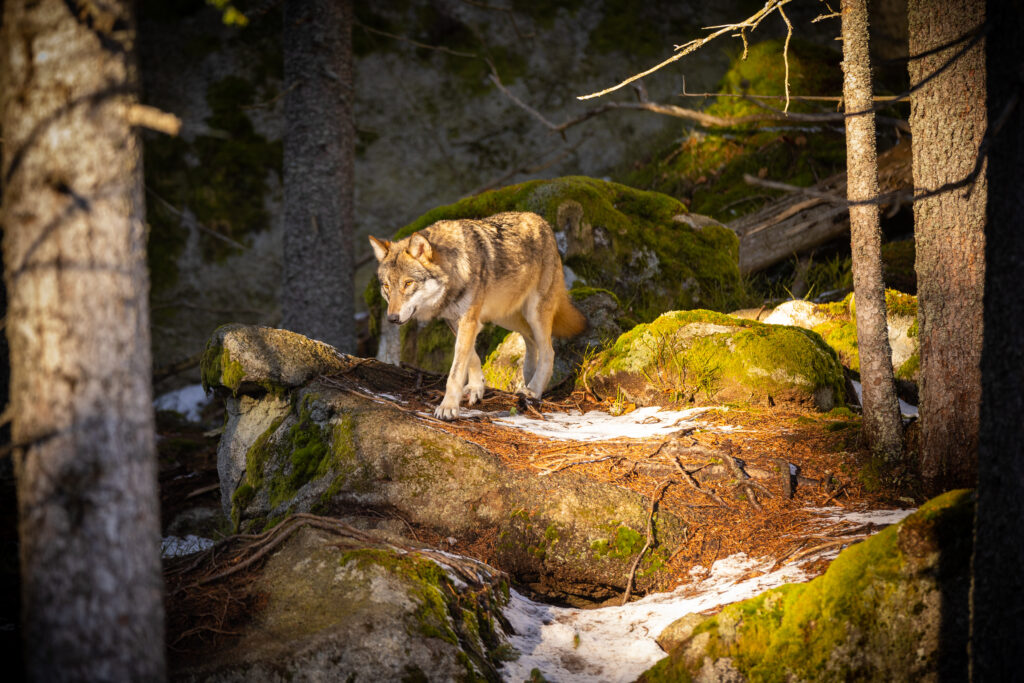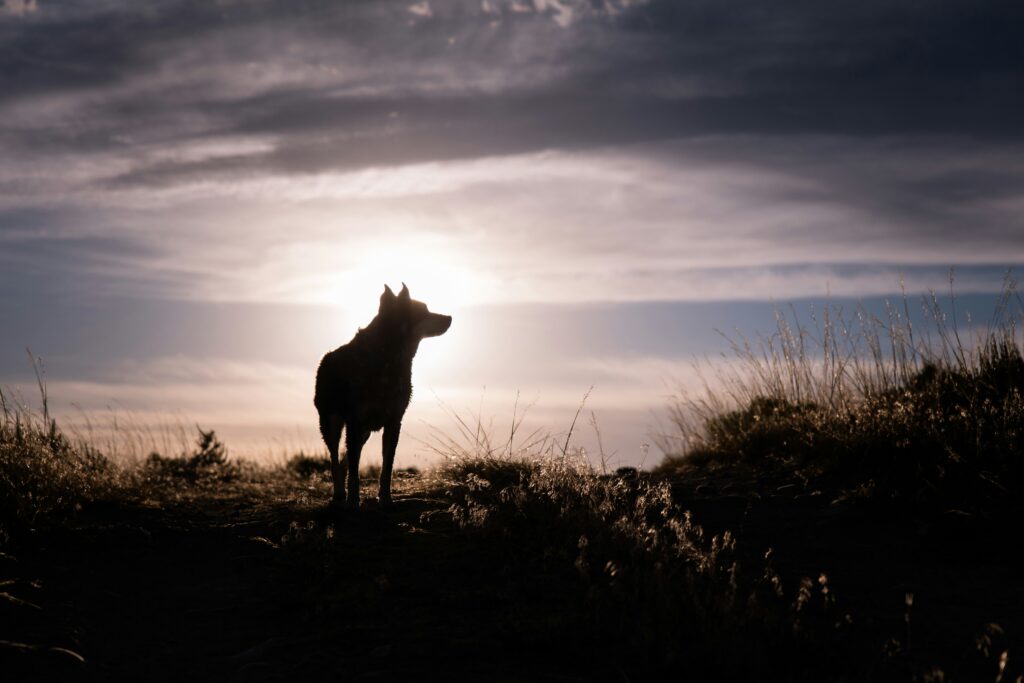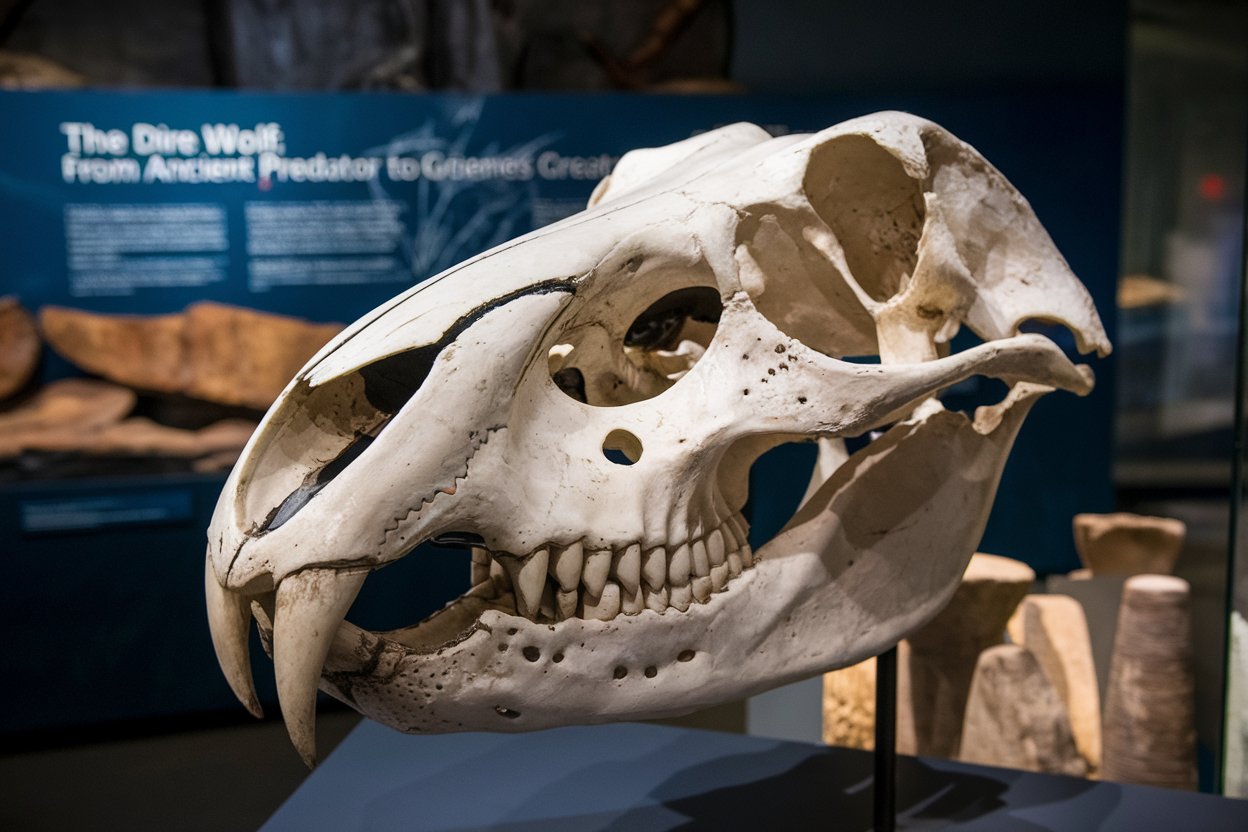The dire wolf, a symbol of Ice Age wilderness, has long been etched into the human imagination. From its role as a loyal companion in Game of Thrones to its sudden resurgence in headlines about “de-extinction,” this prehistoric predator is stepping back into the spotlight not through fossils, but through cutting-edge science. Let’s explore the dire wolf’s legacy, the audacious efforts to revive it, and what this means for our future.
Table of Contents
The Dire Wolf’s Rise and Fall
Dire wolves (Aenocyon dirus) dominated the Americas for over 100,000 years, hunting megafaunas like bison and ground sloths. Stockier and stronger than today’s gray wolves, they weighed up to 150 pounds and possessed bone-crushing jaws. But around 13,000 years ago, they vanished alongside mammoths and saber-toothed cats. Climate shifts, human competition, and dwindling prey likely sealed their fate.

Breaking News: Science Aims to Rewrite Extinction
In 2021, a groundbreaking study revealed dire wolves weren’t true wolves but a distinct lineage. This discovery ignited a bold idea: Could we bring them back? Startups like Colossal Biosciences (known for its woolly mammoth project) are now exploring “de-extinction” using CRISPR gene editing. The plan? Modify gray wolf DNA to mirror dire wolf traits—thicker bones, robust jaws, and cold-adapted fur.

Meet Romulus, Remus, and Khaleesi: The First “Proto-Dire Wolves”
In 2025, Colossal made headlines with the birth of three hybrid wolf pups, nicknamed Romulus, Remus, and Khaleesi. These animals carry edited genes linked to muscle density and tooth structure, mimicking dire wolf features. Critics argue they’re not true dire wolves but genetic mosaics. Still, supporters hail this as a step toward understanding Ice Age genetics.
You can check: Understanding Tornado Warnings and How Tornado Trackers Save Lives
The Ethical Storm: Should We Play “Jurassic Park”?
De-extinction isn’t just a scientific challenge it’s an ethical minefield. Opponents warn that reviving dire wolves could disrupt ecosystems or divert resources from conserving endangered species. Dr. Emily Carter, a biologist quoted in TIME, notes, “We’re solving a puzzle, but we need to ask: Is this for conservation or curiosity?” Meanwhile, Indigenous groups urge caution, emphasizing the cultural weight of reintroducing ancient predators.

What’s Next? Dire Wolves in the 21st Century
Colossal’s team admits full de-extinction is decades away. The immediate focus? Studying how hybrid wolves adapt to modern environments. Could they thrive in Alaska’s tundra or Siberia’s taiga? And what happens if they meet gray wolves? While answers remain elusive, the project has already deepened our grasp of canine evolution.
Why This Matters Beyond Science
The dire wolf’s story isn’t just about genetics it’s about humanity’s relationship with nature. Are we stewards, innovators, or overreachers? As The New York Times put it, “De-extinction forces us to confront what we’ve lost and what we’re willing to risk to reclaim it.” Whether these experiments succeed or fail, they’ve reignited fascination with a species once lost to time.

Conclusion: A New Chapter for an Ancient Icon
The dire wolf’s journey from Ice Age hunter to genetic experiment underscores both human ambition and humility. While we may never see a true dire wolf roam again, science’s quest to resurrect its legacy challenges us to rethink extinction’s finality. As research advances, one thing is clear: The dire wolf’s howl, silent for millennia, continues to echo in labs, ethics debates, and our collective imagination.




